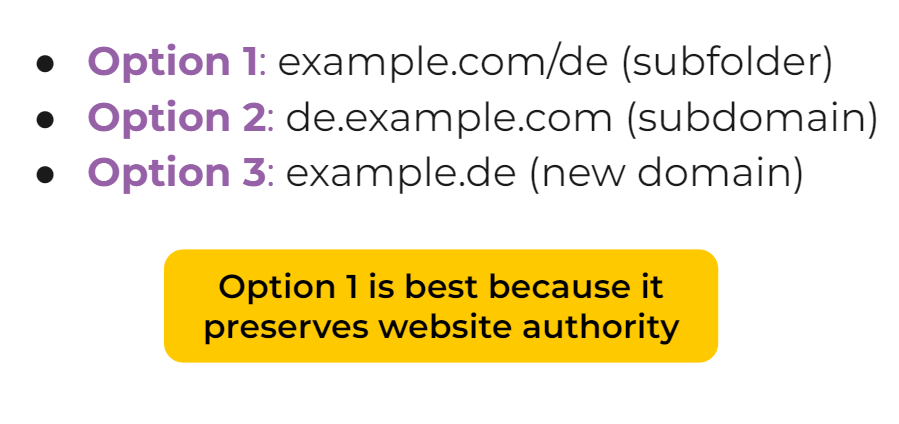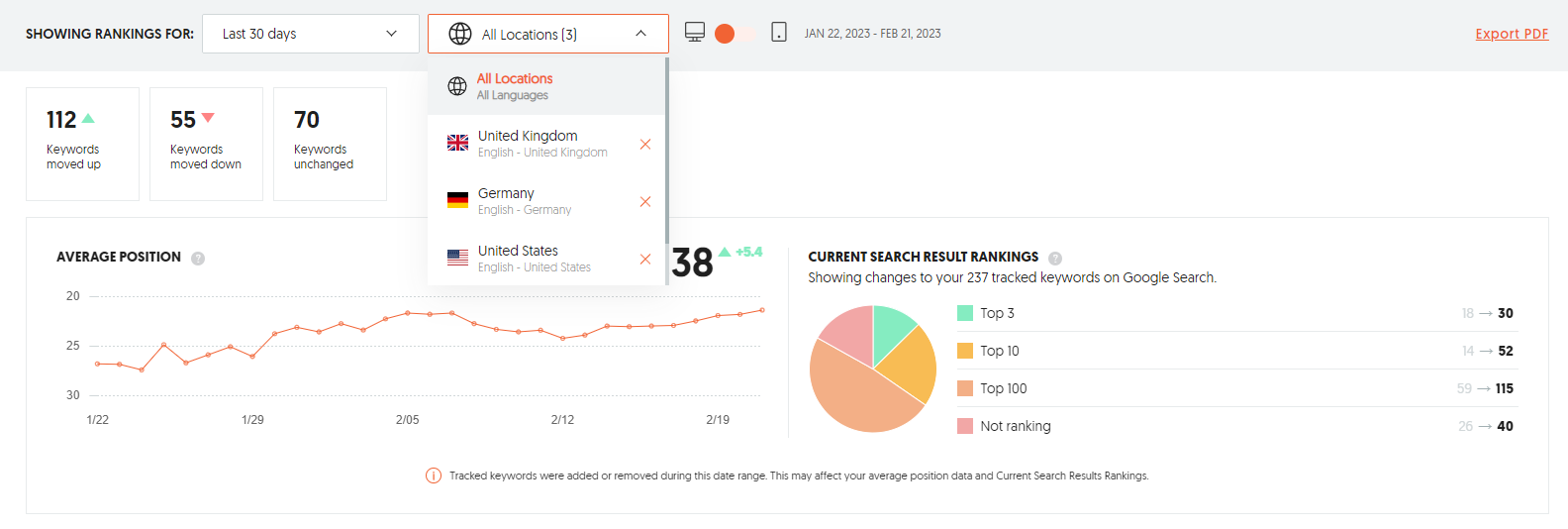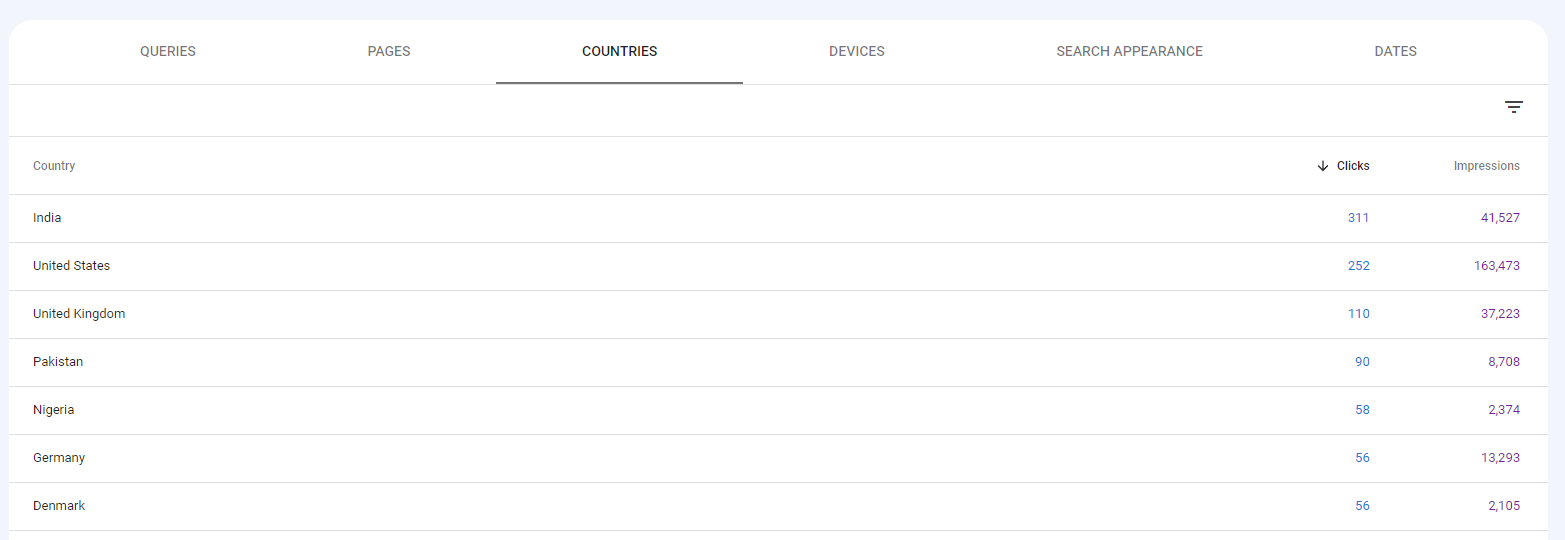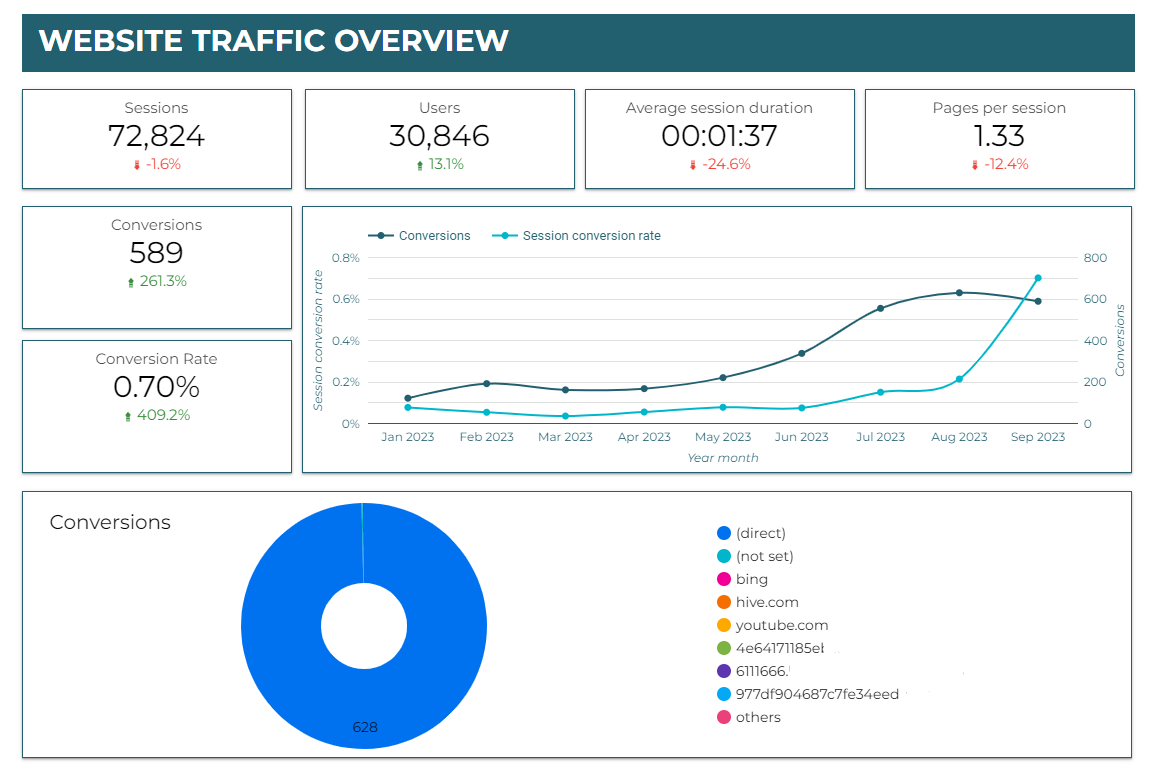When it comes to SEO, many people perceive keyword rankings and organic traffic as “vanity metrics.”
While they could be if they were the only part of SEO being tracked, you do actually need them to help you connect SEO to business growth.
The data allows you to build the whole journey from keyword rankings to a conversion, not just a single point with no context.
When doing SEO for international markets, this data is even more crucial because it’s part of an expansion effort. So you’ll absolutely want to track whether you’re generating revenue for all that effort.
And that’s precisely where proper conversion tracking comes in.
Let’s now take a look at why conversion tracking for international SEO is an essential part of calculating long-term success and explore some concrete steps for how to set it up.
Why Individual Market Tracking Is Crucial For International SEO Success
In addition to creating a big-picture journey of business growth, there are several reasons why individual market tracking is important for international SEO success:
- Proves localization efforts are worthwhile: SEO localization does take more work than translation, but it’s worth the effort. When done well, it positively impacts the market and builds long-term relationships with new target audiences because it heavily focuses on personalization.
- Distinguishes market performance from global marketing: Since you likely won’t have the same level of brand visibility and trust as in your home market, new markets will inevitably perform differently (and be slower). This is not a negative point – in fact, it’s a normal part of the process — and these metrics help you show realistic analysis for new markets.
- Highlights areas of optimization per individual markets: Some markets will perform better than others, so individual metrics highlight places to double down and places where the strategy isn’t working.
- Builds a bridge between foundational SEO data and business growth metrics: All marketing needs to contribute to business growth at some point, and the best way to show that is through data. Tracking individual markets helps ensure continual resource investment from stakeholders where it’s deemed worthwhile.
How To Perform Effective International SEO Conversion Tracking
International SEO conversion tracking doesn’t have to be complicated.
In as little as four steps, you can generate gross revenue figures and determine the ROI of your efforts. All you need to do is:
- Ensure proper URL structure.
- Track basic SEO KPIs for individual markets.
- Set up individual events and conversions for each market.
- Align conversion events with business growth metrics.
Let’s now take a look at how this works in further detail.
Step 1: Ensure Proper URL Structure
The first step to properly tracking international SEO conversions is to ensure that you have the proper URL structure for your multi-language site. Ideally, each language should have a unique home on the website (so avoid creating one page with multiple languages).
You have three options with URL structure: subfolders, subdomains, and a new domain.
The subfolder is often the best choice, as it preserves the original website authority. Although a controversial topic, website authority absolutely carries a heavy weight in terms of international SEO.
Google still has to understand the content in a new language, and when you use a subfolder, you’re more likely to transfer over the authority from previous languages.
If you can’t create a subfolder (such as in the case of certain tech stack limitations), a subdomain is the next best choice.
With the right approach, this can still be effective, but it may take a bit more time to rank content.
The third option should rarely be used, as you’ll need to start completely from scratch with a new domain. Whenever possible, try to use option 1 and create a subfolder.
From the image below, you can see how these URL options are structured:
 Image from author, November 2023 Image from author, November 2023 |
One thing people often ask me about URL structure is,
“Is it worth it to localize different countries that speak the same language, such as Canada (which speaks English and French) and DACH (Austria, Germany, and Switzerland, which all speak German)?”
In many cases, no.
There’s not really enough language variation, and when you separate them, you separate the search volume. This can also create a high risk of cannibalization. For example, when you create German content, all of it can rank across DACH without any further localization.
However, always check with the SEO strategist who speaks the local language, as some languages may have enough variation across different countries to warrant their own page.
I have found a recent example where it was a high search volume topic with language variations, and in that case, it was worth it.
For more information on how to set up your website in such a case, check out these 4 Technical SEO Tips For Multilingual Websites.
Step 2: Track Basic SEO KPIs Per Market
The next step is understanding how to track basic KPIs for each market. Some of the most important SEO KPIs to include per market are:
- Keyword rankings.
- Monthly organic traffic increase.
- Backlinks increase.
- Domain Authority increase.
- Organic CTR.
To put all of the data together and create a comprehensive SEO analysis, one of the most effective options is to use Looker Studio.
However, there are several SEO tools available based on personal preference and user interface. Just make sure that, whichever one you choose, you’re tracking keywords for each market.
You can see an example for market-specific keyword position tracking from Ubersuggest in the image below:
 Screenshot from Ubersuggest, November 2023
Screenshot from Ubersuggest, November 2023Next, put this data into Looker Studio along with Google Search Console (GSC) data and check things in GSC, like organic clicks per country, as per the example below:
 Screenshot from Looker Studio, November 2023
Screenshot from Looker Studio, November 2023As I mentioned at the beginning, these SEO KPIs are often termed “vanity metrics” when they’re the only KPIs being tracked. But to justify the resource investment to win at today’s SEO standards, your strategy must be just as conversion-driven as PPC has long been.
So it’s time for us SEO pros to up our game with SEO conversion tracking, and that’s where the next step comes in.
Step 3: Set Up Individual Events & Conversions Per Market
This next step is one of the most critical, as it transfers the foundational KPIs to understandable business metrics, particularly for management and stakeholders.
This data has largely always been part of PPC campaigns, but it’s often overlooked for SEO. But again, SEO should be just as conversion-driven as PPC if you want to truly understand your ROI.
While you might have this type of data in a CRM or sales analytics tool, you can also summarize it in Looker Studio for one easy data source. You’ll want to track items such as:
- Number of conversions.
- Organic traffic conversion rate.
- Conversion sources.
Many metrics in GA4 regarding engagement are also useful to add here.
When finished compiling the relevant data sources for your strategy, you’ll get a nice overview that clearly outlines market-specific events in easily understandable terms and metrics, as you can see in the screenshot below:
 Screenshot from Looker Studio, November 2023
Screenshot from Looker Studio, November 2023Step 4: Align Conversion Events With Business Growth Metrics Like Leads and Sales
The final step is to bridge the space between marketing and sales.
If you’re in ecommerce, this becomes super easy once you have the above data set up, and you may even have it automatically generated through a CMS like Shopify or directly within GA4.
However, it’s more complicated with B2B businesses, as the sales process is often separated into the sales team.
Scarily enough, sometimes the SEO team doesn’t even get access to this data.
Either way, you’ll need to find this data somehow in order to calculate other elements like lead-to-close rate and average contract value (ACV) to connect international SEO to business growth across specific markets.
Ideally, the sales data should be labeled according to a particular SEO content group, such as a pillar, category, or industry vertical. In the image below, you can get a rudimentary idea, but likely, this is in a CRM or other sales tool.
 Image from author, November 2023
Image from author, November 2023Furthermore, if you know how much a lead is worth based on the average lead-to-close rate and a particular ACV, you can use Google Analytics (slight variance now in GA4) to track gross revenue data.
You’ll need to subtract operational costs from the figures above to get the true ROI, but this still provides a great overview of SEO’s impact on a particular market.
 Screenshot from GA4, November 2023
Screenshot from GA4, November 2023Track International Markets Individually And Win Globally
Overall, tracking your market-specific conversions is the best way to monitor progress and get a big picture of current and future international SEO success.
It helps you see which markets are thriving and which need a little help.
These steps are critical if you want to succeed at global expansion, so take the time to implement conversion tracking so that you can continue performing market-specific analyses, as well as keep an eye on how your SEO efforts impact business success.
More resources:
- Getting Started In International SEO: A Quick Reference Guide
- How Do I Rank Better Internationally In One Or Many Countries?
- What Is the Best Way to Track Organic Conversions?
Featured Image: svetlichniy_igor/Shutterstock





